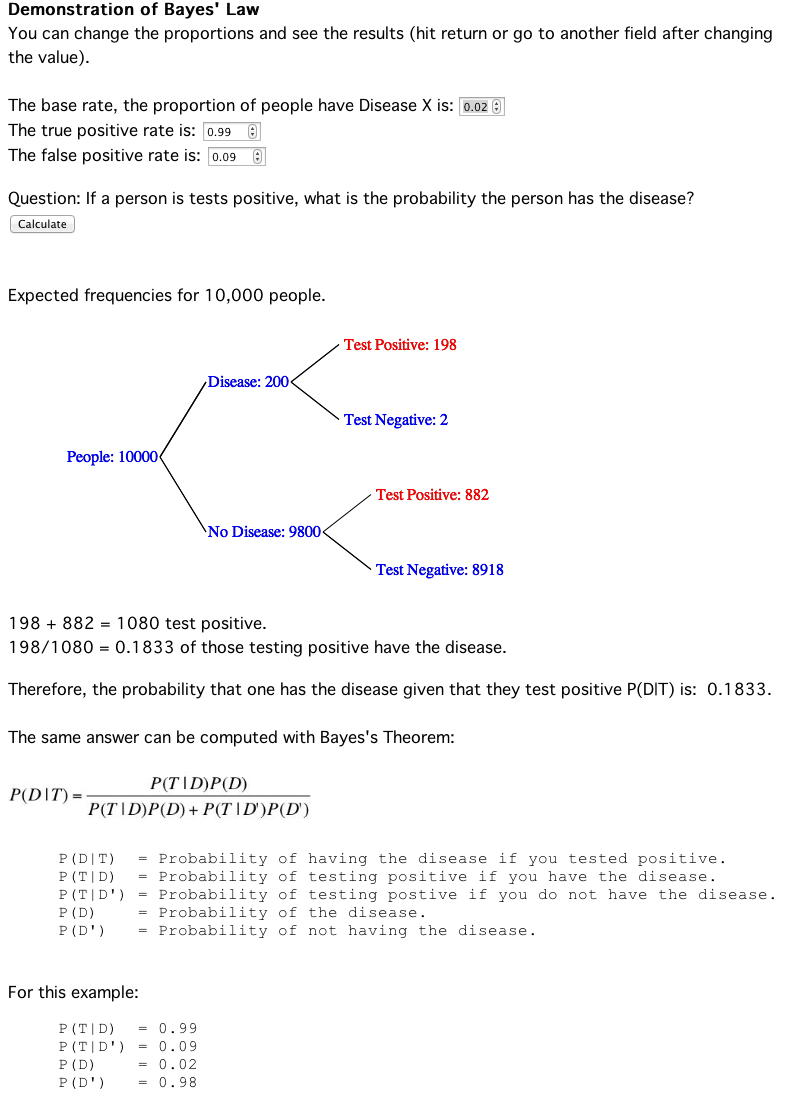Illustrated Instructions
The Bayes' Theorem demonstration starts by displaying the results for the default base rate, true positive rate and the false positive rate as shown in the screenshot below.
You can change any of these three numbers and click the "Calculate" button to get the results based on the changes you make.

You can change the base rate, true positive rate and false positive rate and calculate results for any changes you make.